All Images
News Release 15-025
Spring plankton bloom hitches ride to sea's depths on ocean eddies
Eddies--whirlpools within currents--transport plankton downward from the ocean surface
This material is available primarily for archival purposes. Telephone numbers or other contact information may be out of date; please see current contact information at media contacts.
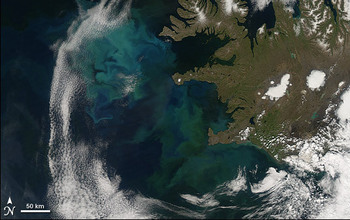
The bright blue and green colors in this satellite image show the North Atlantic Bloom.
Credit: NASA
Download the high-resolution JPG version of the image. (79.7 KB)
Use your mouse to right-click (Mac users may need to Ctrl-click) the link above and choose the option that will save the file or target to your computer.
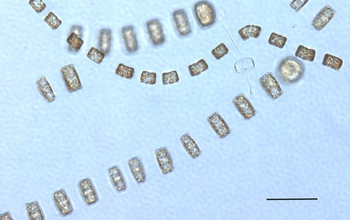
The chain-forming diatom Thalassiosira, seen under a microscope; it's a common bloom phytoplankton.
Credit: Tatiana Rynearson
Download the high-resolution JPG version of the image. (462.2 KB)
Use your mouse to right-click (Mac users may need to Ctrl-click) the link above and choose the option that will save the file or target to your computer.
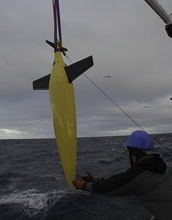
Seaglider as it's lowered into the ocean; it roamed the North Atlantic, tracking the bloom.
Credit: Eric Rehm
Download the high-resolution JPG version of the image. (370.7 KB)
Use your mouse to right-click (Mac users may need to Ctrl-click) the link above and choose the option that will save the file or target to your computer.
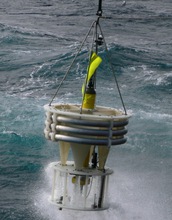
A sediment trap is recovered from the North Atlantic by a crane on a research vessel.
Credit: Amala Mahadevan
Download the high-resolution JPG version of the image. (1.5 MB)
Use your mouse to right-click (Mac users may need to Ctrl-click) the link above and choose the option that will save the file or target to your computer.
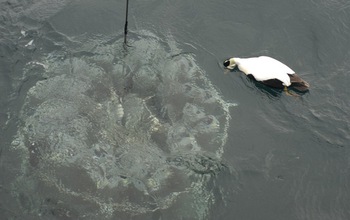
Water-sampling rosette being lowered into the North Atlantic, attracting waterfowl curiosity.
Credit: Amala Mahadevan
Download the high-resolution JPG version of the image. (1.3 MB)
Use your mouse to right-click (Mac users may need to Ctrl-click) the link above and choose the option that will save the file or target to your computer.
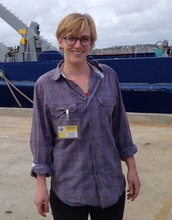
Scientist Melissa Omand at the research dock, the staging area for the bloom project.
Credit: Amala Mahadevan
Download the high-resolution JPG version of the image. (803.2 KB)
Use your mouse to right-click (Mac users may need to Ctrl-click) the link above and choose the option that will save the file or target to your computer.

The researchers' findings are described in the March 27 issue of Science magazine. In the cover image, the cargo adaptor Bicaudal-D2 (orange) brings the dyein motor complex (yellow) together with its essential cofactor dynactin (red.) This giant complex of 37 proteins drags cellular cargos for long distances along microtubules (blue) Cryo-electron microscopy provides insight into the structural assembly and operation of this supracomplex. See page 1441.
Credit: Illustration: Chris Bickel, Science
Download the high-resolution JPG version of the image. (239.7 KB)
Use your mouse to right-click (Mac users may need to Ctrl-click) the link above and choose the option that will save the file or target to your computer.


